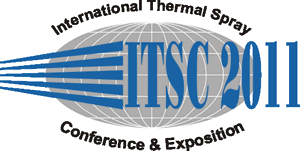
|
2670 |
|
Thursday, September 29, 2011, Saal A 4:25 PM Wear Protection 2 |
|
Characterization of HVOF sprayed Fe-based alloy coatings |
|
Giovanni Bolelli / Department of Engineering "Enzo Ferrari", University of Modena and Reggio Emilia, Italy Benedetta Bonferroni/ University of Modena and Reggio Emilia, Department of Materials and Environmental Engineering, Italy Luca Lusvarghi*/ University of Modena and Reggio Emilia, Department of Materials and Environmental Engineering, Italy Andrea Milanti/ University of Modena and Reggio Emilia, Department of Materials and Environmental Engineering, Italy Kari Niemi/ Department of Materials Science, Tampere University of Technology, Finland Jussi Laurila/ Department of Materials Science, Tampere University of Technology, Finland Petri Vuoristo/ Department of Materials Science, Tampere University of Technology, Finland |
|
HVOF-sprayed cermets or Ni- and Co-based metal alloys are widely employed for anti-wear applications, because of their excellent technical performances. Nonetheless, these coatings pose both economic problems (high and fluctuating costs, difficult machining of cermets) and health/safety problems, related to the toxicity and suspect carcinogenicity of some of these powders and to restrictions on Ni-based coatings when no product contamination is required. Fe-based alloys with low Ni content could lessen these troubles; therefore, this study aims to evaluate the microstructure, micromechanical properties and dry sliding wear behaviour (both at room temperature and at high temperature) of two HVOF-sprayed Fe-Cr-Ni-B-C-Si alloy coatings, deposited using commercially-available powders, and to compare their performances to those of conventional HVOF-sprayed Ni-Cr-Fe-B-Si-C and Cr3C2-NiCr layers. The Fe-based coatings mostly consist of well-flattened lamellae containing a uniform dispersion of fine Cr-based borides. They are somewhat harder and less ductile than Ni-Cr-Fe-B-Si-C, as revealed by depth-sensing indentation and scratch testing, but softer than the Cr3C2-NiCr cermet. At room temperature, the dry sliding wear resistance of the Fe-based coatings, tested by ball-on-disk against 100Cr6 steel and Al2O3 counterparts, is superior to that of the Ni-Cr-Fe-B-Si-C coating. Specifically, the wear loss of the Fe-based coatings against steel is negligible, while alumina counterparts cause a combination of mild abrasion, delaminative wear and tribo-oxidation. By contrast, the Ni-Cr-Fe-B-Si-C coating mainly undergoes abrasive grooving (cutting and/or ploughing) against alumina. This remarkable difference can be well explained using the scratch test results. At 400°C and 700°C, the Fe-based coatings still exhibit better wear resistance against Al2O3 than the Ni-Cr-Fe-B-Si-C one, although the differences become smaller, and their wear mechanism becomes dominated by abrasive grooving. The Cr3C2-NiCr cermet coating exhibits superior wear resistance at all temperatures. HVOF-sprayed Fe-based alloy coatings are therefore a good alternative to Ni-based alloys, although they cannot compare with cermet layers. |